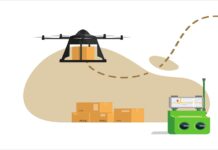The rise of e-commerce has brought about a diverse landscape in business operations. Companies now vary widely in team sizes, goals, and revenue targets, which has created a need for flexible, tailored logistics solutions. From startups to medium-sized businesses, each operates differently, and finding the right logistics support can be pivotal in meeting customer demands efficiently. One essential choice businesses face is deciding between 3PL vs 4PL logistics models, each catering to distinct needs. Knowing the differences and strengths of these two options helps businesses streamline operations and enhance customer satisfaction.
In this guide, we will delve into the nuances of 3PL vs 4PL, exploring their advantages and potential drawbacks to help you choose the right fit for your business needs.
What is a 3PL?
A Third-Party Logistics (3PL) provider is an external partner that supports specific areas of a company’s supply chain, such as fulfilment, warehousing, and transportation. Today, more than 90% of large enterprises rely on 3PL services to streamline their logistics processes, emphasizing the growing importance of these services across businesses of all sizes. In the 3PL vs 4PL comparison, a 3PL focuses on distinct tasks within the supply chain, leaving the business responsible for oversight of the entire logistics strategy.
Working with a 3PL
When a business partners with a 3PL, the provider takes over designated logistics functions. However, the business remains involved, overseeing and guiding the overall process. Common activities managed in collaboration with a 3PL include:
- Setting logistics requirements such as timelines and accuracy expectations.
- Monitoring inventory levels through the 3PL’s systems.
- Reviewing performance to ensure service quality.
- Managing customer relationships while addressing any logistical challenges.
For example, when a company experiences rapid growth, their logistics setup may struggle to keep up with demand. A 3PL can offer support by providing warehousing, order fulfillment, and shipping logistics, all while managing the returns process as well. The primary services provided by 3PLs generally include:
- Transportation: Freight forwarding, TL/LTL, intermodal.
- Warehousing: Inventory management, storage, and fulfillment.
- Customs Compliance: Customs brokerage and duty management.
- Supply Chain Management: Demand planning and risk management.
- Technology Solutions: Including Transportation Management Systems (TMS), Warehouse Management Systems (WMS), and visibility tools.
A significant benefit of 3PLs is their integration capabilities. Many 3PLs can connect with e-commerce platforms to update inventory levels, order statuses, and tracking information in real-time, streamlining the entire fulfillment process. Additionally, multi-channel fulfillment allows them to process orders across various sales channels, such as websites, online marketplaces, and physical stores, delivering a seamless customer experience.
What is a 4PL?
A Fourth-Party Logistics (4PL) provider acts as a comprehensive logistics partner, overseeing the entire supply chain management process. Unlike 3PLs, which focus on specific logistics tasks, 4PLs serve as a single point of contact that handles everything, from sourcing materials to coordinating with suppliers and managing multiple 3PL providers. This model is particularly advantageous for larger companies or those with complex, multi-region logistics needs, as it enables them to concentrate on strategy rather than logistics management.
Working with a 4PL
When a business partners with a 4PL, they delegate end-to-end supply chain management, allowing the 4PL to handle the full scope of logistics operations. This includes managing suppliers, third-party providers, and regional logistics partners. For instance, a company that distributes products globally can benefit from a 4PL, which can:
- Coordinate suppliers and logistics partners across various regions.
- Act as a single point of contact, simplifying communication and logistics management.
- Optimize logistics processes using data-driven insights.
- Handle all aspects of the supply chain, including vendor negotiations, customs clearance, and final delivery.
Key Components of a 4PL
A 4PL typically manages several critical aspects of the supply chain:
- Strategic Planning: Designing the supply chain, planning the network, and managing risks.
- Technology Implementation: Integrating advanced tools to enhance operations.
- Performance Tracking: Monitoring KPIs and identifying areas for improvement.
- Vendor Management: Overseeing relationships with 3PLs and other suppliers.
- Financial Oversight: Managing costs and tracking overall performance.
- Customer Alignment: Ensuring supply chain practices align with customer service goals.
4PL providers also offer added value with features like multi-channel fulfillment, inventory management, and supply chain visibility tools. These capabilities help businesses centralize their logistics needs, offering real-time data access and insights that streamline decision-making.
Comparing and Contrasting: 3PL vs 4PL
Understanding the differences between 3PL vs 4PL helps businesses make more informed logistics decisions. Both services support logistics management but differ in scope and approach. Here are the primary contrasts:
- Control: A 3PL involves the business in overseeing the logistics process, while a 4PL takes complete control, offering a hands-off approach for the business.
- Complexity: 3PLs are better suited for straightforward logistics tasks, while 4PLs are ideal for complex supply chains involving multiple partners.
- Cost: Generally, 3PL services are more affordable, as they manage specific functions. 4PL services tend to be more expensive due to the comprehensive nature of their offerings.
- Flexibility: 3PLs allow businesses to change providers or adjust services as needed. A 4PL, which manages the entire supply chain, is often less flexible due to its extensive role.
- Strategic Involvement: While a 3PL focuses on task execution, a 4PL takes a strategic approach, optimizing the entire supply chain for greater efficiency.
Choosing Between 3PL vs 4PL for Order Fulfillment
When deciding between 3PL and 4PL for order fulfillment, several factors come into play, including your business’s size, budget, and need for control over logistics. Here are some points to consider:
- Involvement in Fulfillment: A 3PL is suitable if you want to stay involved in logistics management, overseeing functions like warehousing, shipping, and inventory. For businesses preferring a hands-off approach, a 4PL can manage the complete logistics process, allowing the business to focus solely on growth and strategy.
- Supply Chain Complexity: A straightforward logistics operation can be well-served by a 3PL, especially if the business has limited product lines or simple distribution channels. In contrast, a complex, multi-layered supply chain benefits from a 4PL’s integrated approach, which consolidates logistics under a single management structure.
- Cost Management: For businesses on a tight budget, 3PL services offer a cost-effective option by handling specific logistics needs. On the other hand, 4PL services, while pricier, provide comprehensive supply chain management and often result in efficiency gains that offset the higher initial cost.
- Flexibility: Businesses with straightforward logistics needs that require flexibility may find a 3PL more suitable, as 3PL providers focus on specific logistics elements and allow for scalable adjustments. For complex operations with diverse needs, a 4PL ensures strategic alignment and can better manage the logistical complexity across various suppliers and distribution channels.
In summary, businesses seeking to outsource only specific logistics functions while retaining control should consider a 3PL. Conversely, those looking to delegate their entire logistics management and focus on strategic growth will find a 4PL more advantageous.
Final Thoughts on 3PL vs 4PL: Which is Right for You?
Choosing between 3PL vs 4PL depends on a business’s unique needs, including logistics complexity, desired control level, and budget. For companies aiming to streamline certain aspects of their supply chain, such as order fulfillment or inventory management, a 3PL provides targeted support. Businesses seeking comprehensive logistics management that encompasses every stage of the supply chain will benefit from a 4PL’s end-to-end solutions.
Ultimately, both 3PL and 4PL services offer distinct advantages that empower businesses to operate efficiently, adapt to changing market conditions, and meet growing customer expectations. Carefully assessing operational requirements will help you select the logistics model that best aligns with your business strategy, fostering scalability and customer satisfaction.

























